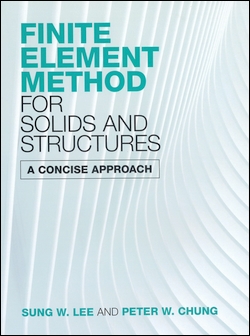書籍分類

Introduction to Finite Elements in Engineering 3/e
作者:Tirupathi R. Chandrupatla, Ashok D. Belegundu
原價:NT$ 1,150
ISBN:9780131784536
版次:3
年份:2002
出版商:Pearson Education
頁數/規格:453頁/平裝單色
版次:3
年份:2002
出版商:Pearson Education
頁數/規格:453頁/平裝單色
內容介紹 本書特色 目錄 作者介紹
- Description
This book provides an integrated approach to finite element methodologies. The development of finite element theory is combined with examples and exercises involving engineering applications. The steps used in the development of the theory are implemented in complete, self-contained computer programs. While the strategy and philosophy of the previous editions has been retained, the Third Edition has been updated and improved to include new material on additional topics.






